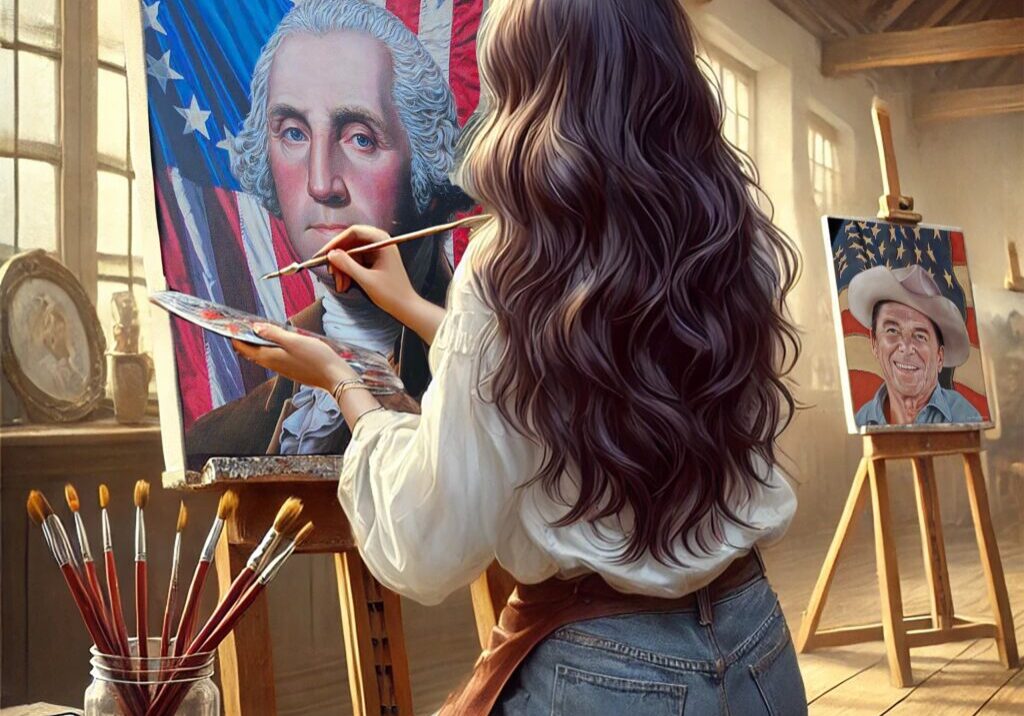
Paint Sign Revolt: How Signage Became Subversion
In Revolutionary America, paint met purpose in the most public ways. The wooden sign swinging above a tavern door. The crude placard nailed to a fencepost. The ink-scrawled notice warning of British ships in the harbor. These were not just markers. They were acts. Acts of identity. Acts of defiance. Each one declared a position, even when no name appeared below. As I composed the mural, I returned to these signs not just for content but for tone. They remind us that visual art often begins with a brush and a message. Signs were among the earliest forms of Revolutionary communication. Unlike printed pamphlets, they could be made by anyone with paint, a brush, and nerve. They were fast. They were direct. And they were placed exactly where they would be seen. On shutters. On crates. Above shopfronts. Even carved into wooden beams. This was art in the open, shaped by urgency and resistance. One famous example is the Liberty Tree signage in Boston. Protesters hung banners and signs from its branches, naming tax collectors, condemning British policies, and celebrating moments of resistance. The tree itself became a symbol, but so did the signs. They were hand-lettered. Sometimes crude. Always pointed. They made the cause visible. They turned passive space into active terrain. Tavern signs carried layered meaning. A simple painting of a crown might once have symbolized loyalty. After the Stamp Act, it became a target. Some signs were removed. Others were altered. Imagery shifted. Patriots began to favor symbols like liberty poles, Native figures, or broken chains. In the mural, I echoed these transformations in the smallest corners. A tavern in the background features a faded crown, barely visible beneath newer markings. It is a quiet visual palimpsest. Something overwritten, but not erased. Even shop signs participated. Silversmiths, apothecaries, and printers often painted their tools or trades above their doorways. When revolution came, some of those signs began to speak louder. A printer’s sign might feature not just a press but a free-standing eagle. A tailor’s board might stitch its seams into a slogan. These images fused daily life with resistance. They turned business fronts into boldface statements. From a painter’s standpoint, these signs were not refined. Their power came from contrast and clarity. Large block lettering. Sharp color differences. Symbols that could be read across a crowded street. When I recreated the feel of signage in the mural, I let go of polish. I let the letters wobble slightly. I allowed the paint to look sun-faded or weatherworn. These signs were not meant to endure. They were meant to act. There is something deeply moving about this kind of visual expression. It does not wait for a frame or a gallery. It announces itself. It risks being torn down. And yet it persists. That is the spirit I wanted in parts of the mural. A poster half-ripped. A slogan brushed onto the back wall of a shop. A chalk line across a barrel. These gestures may not dominate the scene, but they sharpen it. They mark the difference between observation and participation. Signage in the Revolutionary era was not just practical. It was emotional. It captured the voice of people who may not have held office, but who held brushes. Brushes dipped in urgency. Brushes pointed at the future. And that spirit still paints on.

